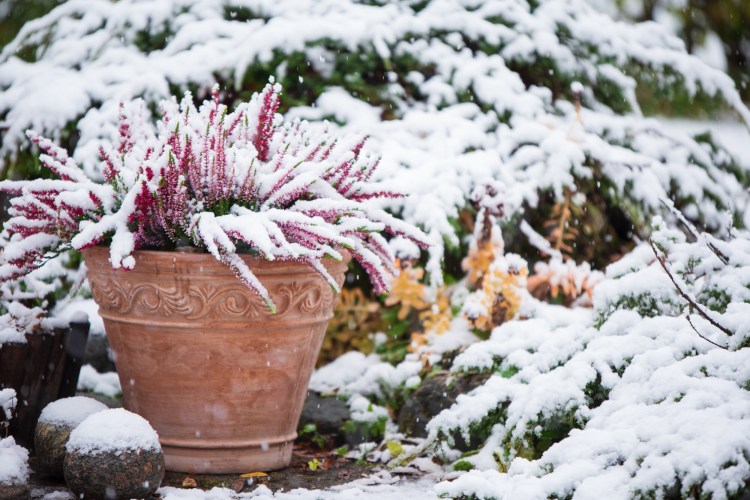By some accounts, last winter was rough on garden plants. Some gardeners told me that herbaceous perennials that had thrived for years died over the winter. They also reported shrub trouble, with many a shrub losing more branches than usual.
Two factors were to blame. For one, temperatures locally were colder than normal. Exacerbating that, snow cover here was minimal or nonexistent. Snow serves as insulation for the soil and plants. Without it, the roots of plants freeze much harder. If the situation repeats itself this winter, the damage could be worse, as plants may be heading into the season weaker as a result of this summer’s drought.
So what should we do to protect our plants for the coming winter? For advice, I contacted Nick Tammaro of Tammaro Landscaping in Cape Elizabeth and Katherine Garland, horticulturist with the University of Maine Cooperative Extension in Penobscot County. I’ll also include some of my own suggestions.
For starters, save yourself the work of raking. Both experts suggested that gardeners leave leaves where they fall in any ornamental garden beds. The leaves not only insulate the roots of plants, but also provide habitat for beneficial insects. If you prefer neat gardens, remove the leaves come spring.
There are alternatives to leaves, mulch among them. Use whatever product you plan to use in the garden in the spring – bark mulch, dry pine needles or straw. I’ve used pine needles to mulch garlic for many years, which do a great job of insulating roots. Because the needles don’t break down quickly, some years I have raked them up, created a pile in a hidden corner of our yard, and then reused them the next year. Straw, if you can get it for a reasonable price, also works well.
This is where Garland calls it a day. “I am of the mindset that people should create a resilient landscape that does not require a lot of maintenance or protection,” she said.
She suggests gardens include natives that should survive naturally, as well as hardy non-natives. Try some marginal plants that might or might not survive, too, she said, as long as you won’t be upset if you lose them. For her, taking a risk in the garden can be informative and fun.
Tammaro advises pruning trees and shrubs judiciously now, getting rid of branches that are already showing some damage or are growing at a horizontal angle, which means they could break under the weight of an ice storm or heavy, sticky snow.
“It varies from plant to plant,” he added. “For example, don’t prune rhododendrons because you will be taking flower buds,” which have already set for next year’s bloom.
Keep watering unless we get plenty of rain. As a plant’s leaves dry out in the fall, the plant sends moisture down to the roots. But if the desiccation comes too soon, if unusually warm temperatures and high winds persist, the roots can suffer. Water at least until the first frost. If you followed my advice in a recent column and did some fall planting, be sure to water the new plants – they are still adjusting to their new homes.
Consider cutting back herbaceous perennials. Some home gardeners cut back everything, Others leave the browned plants standing until spring. I’m in the middle: If it’s ugly, it goes. Many day lilies, which bloom early in the season, flop to the ground and turn brown by Labor Day. We’ve already gotten rid of those. Hostas look good until the first frost and then droop and lose their looks. That’s when we remove them. Plants that stand upright, especially if they have seed heads or the remnants of flowers, despite their lack of color, can stay until spring.
My goal is to get all my garden winter prep done by Thanksgiving so I can enjoy a peaceful and, I hope, snowy winter.
Tom Atwell is a freelance writer gardening in Cape Elizabeth. He can be contacted at: tomatwell@me.com.
Send questions/comments to the editors.



Success. Please wait for the page to reload. If the page does not reload within 5 seconds, please refresh the page.
Enter your email and password to access comments.
Hi, to comment on stories you must . This profile is in addition to your subscription and website login.
Already have a commenting profile? .
Invalid username/password.
Please check your email to confirm and complete your registration.
Only subscribers are eligible to post comments. Please subscribe or login first for digital access. Here’s why.
Use the form below to reset your password. When you've submitted your account email, we will send an email with a reset code.